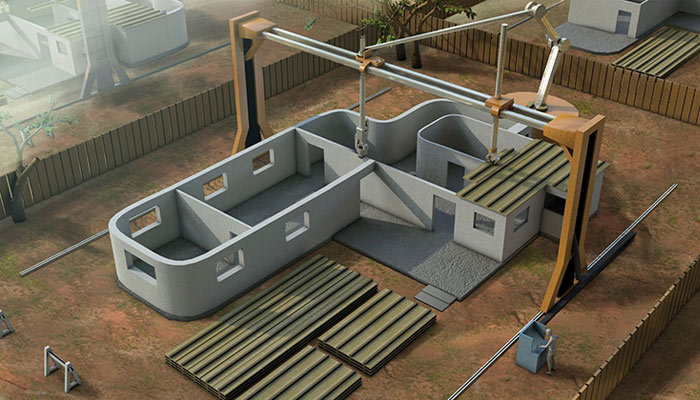As we progress through the advancing domain of technology, one discovery stands notably in the industry of infrastructure: 3D fabrication. This groundbreaking approach is reshaping the manner structures and structures are designed and assembled, bringing forth a new era of efficiency, environmental responsibility, and innovation.
Transforming Infrastructure: One Sheet at a Time
The integration of 3D printing in building offers numerous game-changing gains. Chief among these is the significant decrease in material surplus. Traditional construction techniques usually lead in notable excess substances that lead to ecological waste. In opposition, 3D fabrication employs a meticulous layer-by-layer strategy, consuming only the needed quantity of resource and thus reducing waste greatly.
Another significant perk is the dramatic decrease in construction period. Developments that historically demand long periods can be finished in a portion of the timeline with 3D printing technologies. This speed-up is due to the mechanized nature of 3D devices that can function continuously without worker intervention, significantly reducing overall construction deadlines.
Moreover, 3D manufacturing unlocks possibilities for building complex, tailored structures at no added expense. The adaptability of 3D devices allows for elaborate designs and structures to be developed that would either be highly costly or impossible to accomplish with conventional construction methods. This feature not only enhances design aesthetics but also permits engineers to optimize plans for superior functionality and longevity.

Lowering Expenses and Enhancing Accessibility
Cost reduction is yet another notable perk delivered by 3D fabrication in infrastructure. By minimizing labor spending and decreasing the timeframe needed to complete undertakings, the overall expenditure associated with building edifices is minimized. Moreover, low-cost 3D manufacturing devices are getting more accessible, putting this technology attainable for emerging businesses and individuals enthusiastic to experiment with its capabilities.
The budget-friendliness of these units also enables advancement in associated areas such as garment printing. While mainly known in building sectors, the scope of 3D printing extends into numerous domains including fashion. Here, artists explore with 3D manufactured attire, pushing creative constraints and revolutionizing fabric handling while utilizing cost-effective fabrication costs.
An Eco-Friendly Era Driven by Technology
Eco-friendliness is another cornerstone of this method’s appeal in the building sector. 3D printing promotes a eco-conscious method to building by cutting substance excess and power usage. Additionally, it enables the use of eco-friendly resources like reclaimed synthetics or composite mixtures, which moreover lowers the carbon effect of this conventionally heavy-polluting industry.
The international transition to sustainable methods discovers a powerful partner in 3D printing systems, potentially revolutionizing how building regulations and criteria are developed going forward. By implementing these advanced techniques, the construction industry advances toward achieving greener operational strategies.
Turning Ideas to Existence
Imagine neighborhood facilities in disadvantaged regions being built within weeks to address pressing needs or designers creating wonders reminiscent of organic structures that blend effortlessly into their environments – such scenarios are not only theoretical but are fast becoming possible through 3D printing.
While these milestones mark just the start, they hint at a time where building harmonizes seamlessly with both societal aspirations and sustainable stewardship.
If we continue on this trajectory, infrastructure will not only mean the tangible formation of spaces but also represent a dedication to creative mindsets and ethical existence. Merging creativity with practicality, 3D fabrication is set to transform our tangible world in manners we are just starting to understand.
Through continual improvements and an embracing of these forward-thinking methods, our developed surroundings will undoubtedly evolve into representations of human creativity fueled by the accuracy and endless potential of 3D fabrication.
To read more about may in soi nhua visit this popular webpage: look at this now
